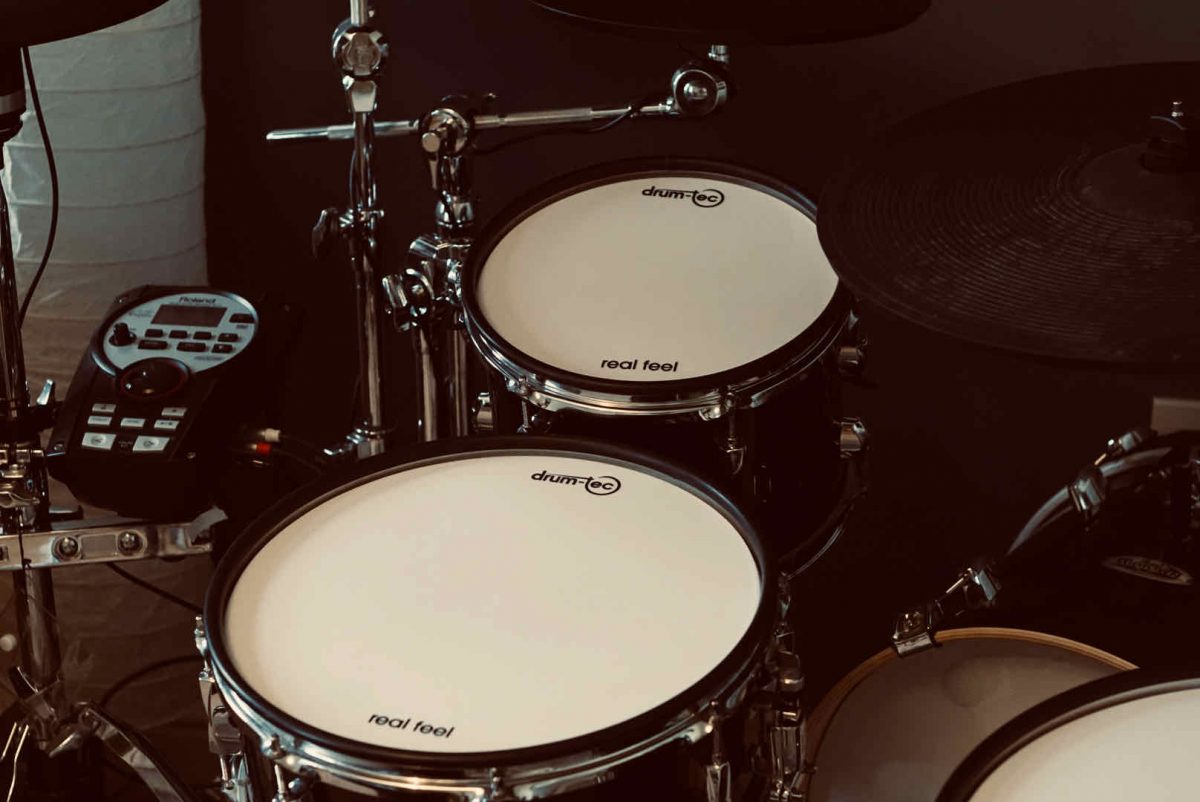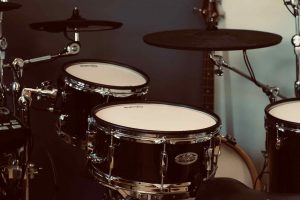Drums are a fun instrument to play let down by one thing – the noise. Unless you live in a detached house, they can be a burden to neighbours, and even then, the loud noise can be an issue for the people you live with.
Electronic drums can be an attractive alternative, but as we explore in another article, electronic drums feel different to play compared with acoustic drums. So that begs the question, is it ok to learn the drums on an electronic kit?
Are electronic drums good for beginners?
Electronic drums can be a great tool for beginner drummers, thanks to built-in features such as a metronome, the ability to play along to songs, and training tools and software often included with many eDrum sets. And because they’re quieter than acoustic drums, they offer a way to practice regularly which might not always be possible otherwise.
Know the differences between acoustic and electronic drums for beginners
The main thing to know for beginners is that electronic drums attempt to provide an approximation of your playing via the sound output from the module, using a limited set of ‘sound samples’ that are triggered by your playing. More advanced and expensive kits will do a better job of this than cheaper kits, which even when played by the best drummers, can sound a bit robotic. That’s because cheaper kits are likely to have fewer sound samples and are less able to replicate your drumming inputs.
Meanwhile, an acoustic kit will replicate your drumming 1:1. Real drums sound different depending on several factors:
- How hard you hit the drum (dynamics)
- The position where you strike the drum head
- How accurate you are at hitting the drum in the same spot with each stroke
- The way you vary the dynamics of your playing
Why does this matter? When playing an acoustic drum kit, everything you do comes out in the sound the drum makes. Meanwhile, using a cheaper or otherwise less-capable electronic drum may mask some of what you’re playing on the kit.
An acoustic drum is, therefore – as you might expect – the most accurate way of hearing what you’re actually playing. This 1:1 feedback is beneficial for beginner drummers as nothing is hidden from your playing. As you develop, that feedback will be useful to perfect your playing.
How can an electronic drum kit benefit beginners?
Overall, the main benefit of an electronic drum kit for beginners is the chance to practice more frequently without disturbing your neighbours or housemates.
Let’s return to the first point in this article – the main downside of acoustic drums is the noise. There’s no volume knob on an acoustic kit. It is possible to mute your drums, for example using rubber pads on the drums and cymbals, or using mesh drum heads and low-volume cymbals.
This changes the feel of your drums, meaning you lose one of the advantages of an acoustic kit. If you’re having to change the feel of your acoustic drums then you might want to consider an electronic kit, which will have the same limitations but with the added benefits of having a drum module – the built-in metronome or ability to record your performance, for example.
So if you’re a beginner drummer but don’t have a way to practice at home, an electric drum kit can be beneficial if it means you can practice more frequently. And as we see in another of our articles, it takes 10,000 hours to become a pro-level drummer. Practice really does make perfect!
Using an electronic drum kit to complement practice on an acoustic kit
If you decide to choose an electronic drum kit to practice on at home, then our top tip for beginner drummers is to ensure you have access to an acoustic drum kit elsewhere to practice on, for example with a drum tutor.
To be a great drummer, you will need to be great on an acoustic drum kit too, and as we’ve seen there are some limitations of electronic drums for beginners. Having some regular time on an acoustic kit will help ensure your technique is solid and avoids you playing to the inherent limitations of your electronic kit.
Using coaching tools on an electronic drum kit
To wrap up, an electronic kit is a great buy for a beginner drummer when the alternative might be not being able to practice at all. To really make the most of an electronic drum as a practice tool, it’s a good idea to consider and use the built-in practice tools. We’d recommend:
- Metronome: Timing is everything with drumming, and playing to a metronome is the best way to build this important skill
- Audio-in port or Bluetooth: Playing along to your favourite songs is a fun way to learn and another way to build your time-keeping
- Built-in recording: Hearing yourself and being able to critique the way you play is another important way to progress. Many drum modules have a recording function
- Audio-out: An even better way to critique your playing is via video. If you have a video camera with an audio-in or mic-in port, you can connect your electronic drums’ master-out to this and hear yourself in detail, without the ambient pad noises




